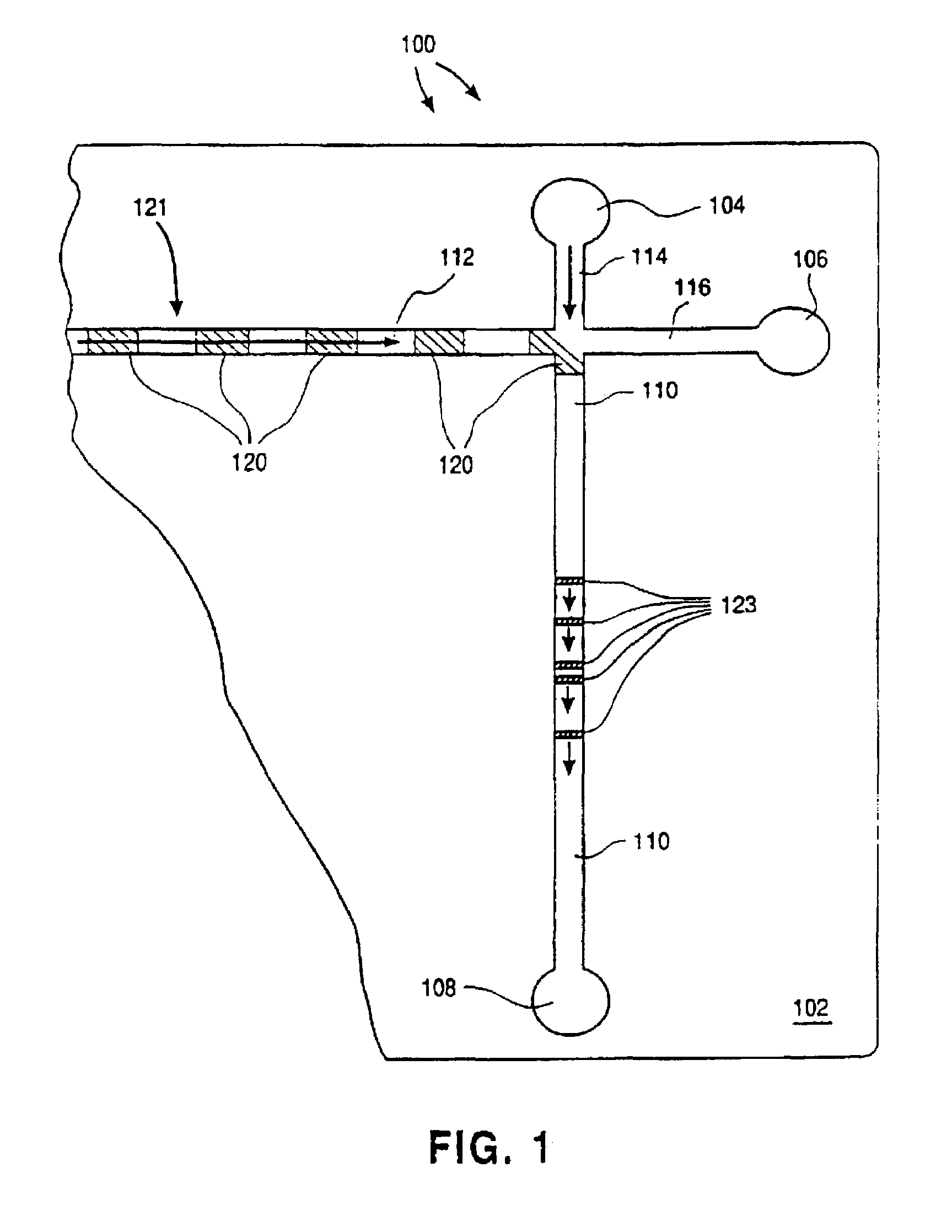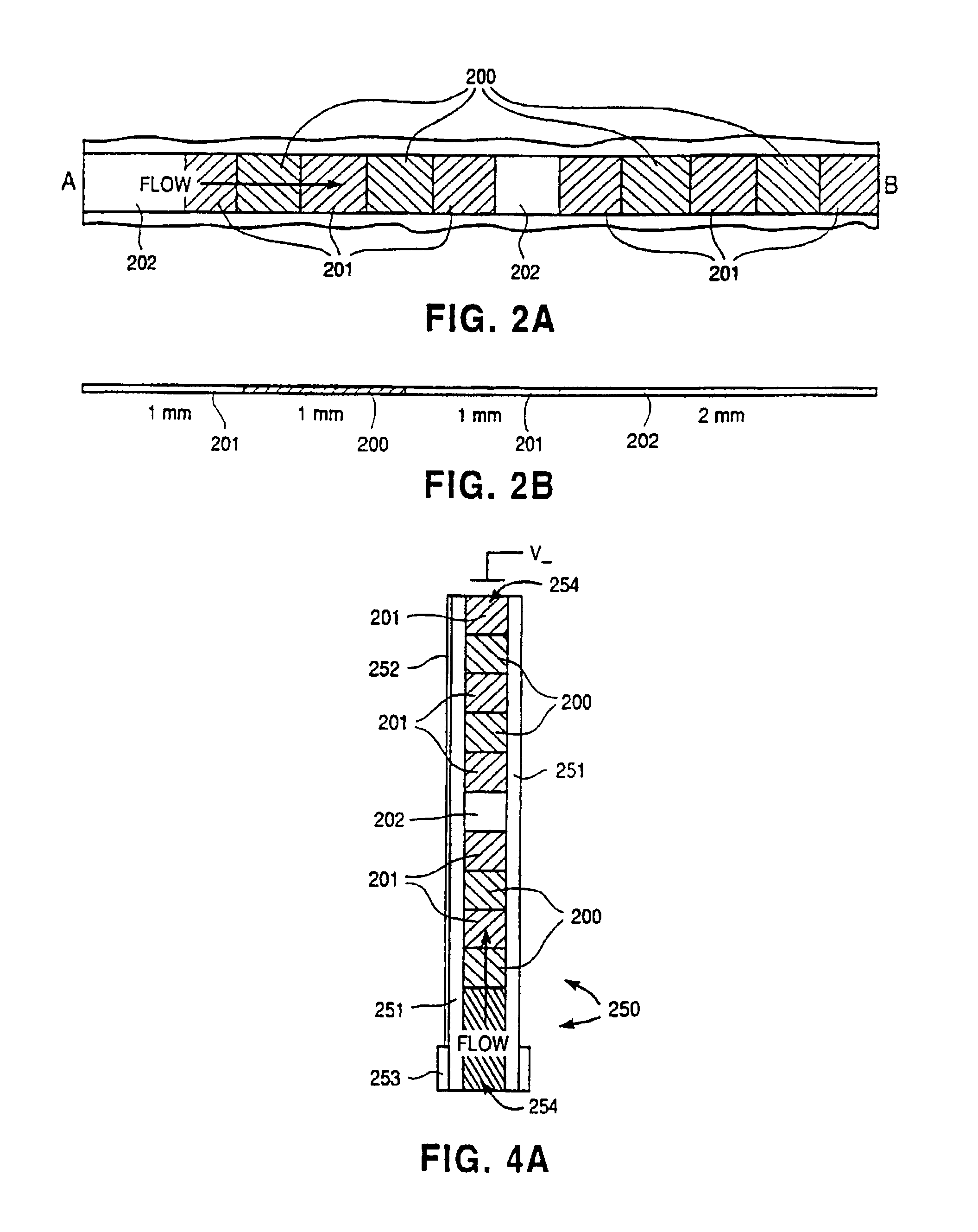Electropipettor and compensation means for electrophoretic bias
a technology of electrophoretic bias and electrophoretic bias, which is applied in the field of microfluidic systems, can solve the problems of undesirable alteration or “electrophoretic bias” in the subject material, and achieve the effect of easy introduction
- Summary
- Abstract
- Description
- Claims
- Application Information
AI Technical Summary
Benefits of technology
Problems solved by technology
Method used
Image
Examples
example 1
Forced Co-Migration of Differentially Charged Species, in Electropipettor-Type Format
[0102]In order to demonstrate the efficacy of methods used to eliminate or reduce electrophoretic bias, two oppositely charged species were electrokinetically pumped in a capillary channel, and comigrated in a single sample plug. A Beckman Capillary Electrophoresis system was used to model the electrophoretic forces in a capillary channel.
[0103]In brief, a sample containing benzylamine and benzoic acid in either low ionic concentration (or “low salt”) (5 mM borate), or high ionic concentration (“high salt”) (500 mM borate) buffer, pH 8.6, was used in this experiment. The benzoic acid was present at approximately 2× the concentration of the benzylamine. All injections were timed for 0.17 minutes. Injection plug length was determined by the injection voltage, 8 or 30 kV. The low salt and high salt buffers were as described above.
[0104]In a first experiment, three successive injections of sample in low...
example 2
Migration of Subject Materials through Electropipettor into Microfluidic System Substrate
[0107]FIGS. 9A–9C illustrate the experimental test results of the introduction of a subject material, i.e., a sample, into a microfluidic system substrate through an electropipettor as described above. The sample is rhodamine B in a phosphate buffered saline solution, pH 7.4. A high ionic concentration (“high salt”) buffer was also formed from the phosphate buffered saline solution, pH 7.4. A low ionic concentration (“low salt”) buffer was formed from 5 mM Na borate, pH 8.6, solution.
[0108]In the tests subject material regions containing the fluorescent rhodamine B were periodically injected into the capillary channel of an electropipettor which is joined to a microfluidic system substrate. High salt and low salt buffers were also injected between the subject material regions, as described previously. FIG. 9A is a plot of the fluorescence intensity of the rhodamine B monitored at a point along t...
PUM
| Property | Measurement | Unit |
|---|---|---|
| Length | aaaaa | aaaaa |
| Length | aaaaa | aaaaa |
| Diameter | aaaaa | aaaaa |
Abstract
Description
Claims
Application Information
 Login to View More
Login to View More - R&D
- Intellectual Property
- Life Sciences
- Materials
- Tech Scout
- Unparalleled Data Quality
- Higher Quality Content
- 60% Fewer Hallucinations
Browse by: Latest US Patents, China's latest patents, Technical Efficacy Thesaurus, Application Domain, Technology Topic, Popular Technical Reports.
© 2025 PatSnap. All rights reserved.Legal|Privacy policy|Modern Slavery Act Transparency Statement|Sitemap|About US| Contact US: help@patsnap.com



